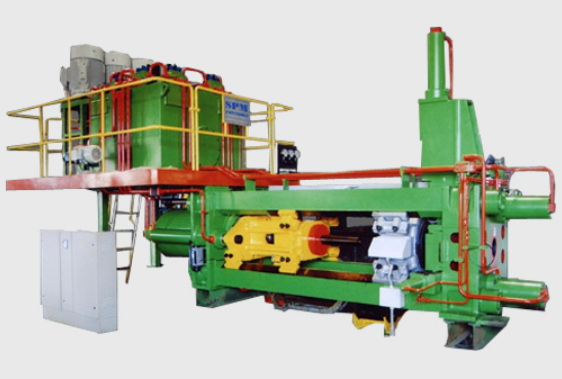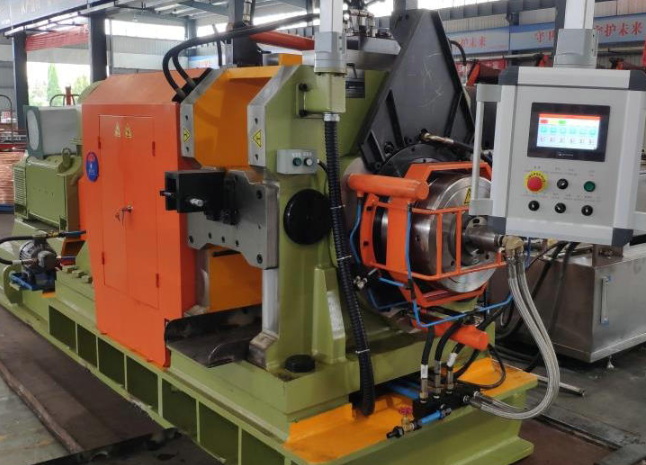Content Menu
● Introduction to Extrusion Equipment
>> Extrusion Process Overview
● Key Components of Extrusion Equipment
● Types of Extrusion Machines
● Applications of Extrusion Equipment
● Advantages of Extrusion Equipment
● Challenges and Future Developments
● Conclusion
● FAQ
>> 1. What is the extrusion equipment meaning?
>> 2. How does extrusion equipment work?
>> 3. What are the key components of extrusion equipment?
>> 4. What are the types of extrusion machines?
>> 5. What are the applications of extrusion equipment?
● Citations:
Extrusion equipment is a crucial component in various manufacturing industries, including plastics, metals, and food processing. It plays a vital role in shaping raw materials into continuous profiles with specific cross-sectional shapes. In this article, we will delve into the workings of extrusion equipment, its applications, and the different types of extruders available.

Introduction to Extrusion Equipment
Extrusion equipment is designed to force raw materials through a die, creating products with uniform cross-sections. This process involves heating and melting the material, which is then pushed through a mold to achieve the desired shape. The versatility of extrusion technology makes it indispensable in sectors ranging from plastics to food industries. The extrusion equipment meaning encompasses a broad range of machinery and processes tailored to specific materials and applications.
Extrusion Process Overview
The extrusion process involves several key steps:
1. Material Preparation: Raw materials, often in the form of pellets or powder, are fed into the extruder through a hopper. This step ensures a consistent supply of material for processing.
2. Melting and Mixing: The material is heated and melted by the rotating screw within the barrel. This step ensures uniform consistency and temperature, which are critical for achieving the desired product quality.
3. Shaping: The molten material is forced through a die, which shapes it into the desired form. The die design is crucial for meeting product specifications and ensuring that the final product has the required dimensions and shape.
4. Cooling: The extruded product is cooled to solidify its shape. Cooling methods include air, water, or oil baths, depending on the material and desired cooling rate.
5. Cutting or Winding: The final step involves cutting the product to specific lengths or winding it onto reels for further processing or packaging.
Key Components of Extrusion Equipment
Understanding the components of extrusion equipment is essential for optimizing the extrusion process.
- Hopper: Serves as the entry point for raw materials. The hopper ensures a consistent feed rate, which is vital for maintaining uniform product quality.
- Barrel and Screw: The barrel houses the screw, which melts and mixes the material. The screw design is critical for efficient processing, as it influences the melting rate, mixing efficiency, and overall throughput of the extruder.
- Die: Shapes the molten material into the desired profile. Accurate die design is crucial for meeting product specifications and ensuring that the final product meets the required dimensions and shape.
- Cooling System: Essential for solidifying the extruded product. The cooling system must be designed to efficiently remove heat from the product without causing distortion or stress.
- Control Systems: Modern extruders often include sophisticated control systems that monitor and regulate temperature, pressure, and speed. These systems help maintain consistent operating conditions and optimize product quality.
Types of Extrusion Machines
Extrusion machines vary based on their screw configuration and application.
- Single-Screw Extruders: Ideal for simple extrusion tasks, such as producing pipes and films. Single-screw extruders are cost-effective and suitable for materials that do not require extensive mixing.
- Twin-Screw Extruders: Offer better mixing and heat transfer, making them suitable for complex formulations. Twin-screw extruders are commonly used in the production of compounds and blends that require thorough mixing.
- Co-Extruders: Allow for the simultaneous extrusion of multiple materials, creating composite products. Co-extrusion is used in applications where different materials need to be combined to achieve specific properties.
- Ram or Plunger Extruders: Used for metals and ceramics, employing a ram to push the material through the die. This type of extruder is suitable for materials that cannot be melted and processed using conventional screw-based systems.
Applications of Extrusion Equipment
Extrusion technology is widely applied across various industries:
- Plastics Industry: Produces pipes, profiles, films, and sheets. The plastics industry relies heavily on extrusion for manufacturing a wide range of products, from packaging materials to construction components.
- Food Industry: Used for making snacks and pastries. Food extrusion involves processing ingredients into specific shapes and textures, often using high-pressure and temperature conditions.
- Metal Industry: Aluminum and other metals are extruded for structural components. Metal extrusion is used to produce complex shapes that are difficult to achieve through other manufacturing methods.
- Pharmaceutical and Cosmetic Industries: Extrusion is used in the production of tablets and other pharmaceutical forms, as well as in the manufacture of cosmetic products.

Advantages of Extrusion Equipment
Extrusion equipment offers several advantages that make it a preferred choice in many industries:
- Efficiency: Extrusion allows for continuous production, which enhances efficiency and reduces production costs.
- Flexibility: Extruders can be adapted to process a wide range of materials and produce diverse products.
- Consistency: The extrusion process ensures consistent product quality, which is critical in meeting customer specifications.
Challenges and Future Developments
Despite its advantages, extrusion technology faces challenges such as energy efficiency, material waste reduction, and the need for more sustainable practices. Future developments are likely to focus on improving process efficiency, reducing environmental impact, and integrating advanced technologies like automation and AI to enhance productivity and product quality.
Conclusion
Extrusion equipment is a vital tool in modern manufacturing, offering versatility and efficiency in producing a wide range of products. Understanding its components and processes is crucial for optimizing production and ensuring high-quality outputs. As industries continue to evolve, the role of extrusion equipment will remain central in meeting the demands for innovative and sustainable manufacturing solutions.

FAQ
1. What is the extrusion equipment meaning?
Extrusion equipment refers to machinery used to shape raw materials into continuous profiles by forcing them through a die. This process is fundamental in industries like plastics and metals.
2. How does extrusion equipment work?
Extrusion equipment works by heating and melting raw materials, which are then pushed through a die to achieve the desired shape. The process involves feeding, melting, shaping, cooling, and cutting or winding.
3. What are the key components of extrusion equipment?
The key components include the hopper, barrel and screw, die, heating and cooling systems, and control systems. Each component plays a crucial role in ensuring efficient operation.
4. What are the types of extrusion machines?
Common types include single-screw, twin-screw, co-extruders, and ram or plunger extruders. Each type is suited for specific applications based on material and complexity.
5. What are the applications of extrusion equipment?
Extrusion equipment is used in the plastics, food, metal, and other industries to produce a variety of products such as pipes, profiles, films, snacks, and structural components.
Citations:
[1] https://www.bausano.com/en/press-and-news/what-is-an-extruder-and-how-does-it-work
[2] https://www.handingmachinery.com/new_detail/What-does-an-extrusion-machine-do.html
[3] https://jieyatwinscrew.com/blog/exploring-extrusion-equipment/
[4] https://www.alamy.com/stock-photo/extrusion-machine.html
[5] https://www.youtube.com/watch?v=P8BWQBP4Vhk
[6] https://www.macocorporation.com/blog/extruder-machine/
[7] https://testbook.com/objective-questions/mcq-on-extrusion--5eea6a0d39140f30f369e2ec
[8] https://www.conairgroup.com/resources/resource/extrusion-processing-basic-guide-to-auxiliary-equipment/
[9] https://www.accextrusion.com/news/how-does-a-plastic-extrusion-machine-work/
[10] https://jfextruder.com/what-is-a-plastic-extruder-machine/
[11] https://engitech.in/extrusion-machines-and-extruders-guide/
[12] https://www.youtube.com/watch?v=NSCX6K1eecI
[13] https://sintac.es/en/what-is-extrusion-meaning-and-process/
[14] https://www.youtube.com/watch?v=Y75IQksBb0M
[15] https://omnexus.specialchem.com/selection-guide/an-in-depth-look-at-extrusion
[16] https://paulmurphyplastics.com/industry-news-blog/extrusion-process-working-types-application-advantages-and-disadvantages/
[17] https://www.conairgroup.com/resources/resource/extrusion-processing-basic-guide-to-auxiliary-equipment/
[18] https://www.globalspec.com/learnmore/manufacturing_process_equipment/manufacturing_equipment_components/extrusion_machines
[19] https://dictionary.cambridge.org/dictionary/english/extrusion
[20] https://www.rocalextrusions.co.uk/news/how-do-plastic-extrusion-machines-work/
[21] https://www.thermofisher.com/hk/en/home/industrial/manufacturing-processing/extrusion-compounding-equipment/features.html
[22] https://www.dynisco.com/userfiles/files/Introduction_To_Extrusion.pdf
[23] https://www.tfgusa.com/understanding-extrusion-a-fundamental-manufacturing-process/
[24] https://www.macocorporation.com/blog/extruder-machine/
[25] https://stock.adobe.com/search?k=extrusion
[26] https://www.istockphoto.com/photos/extrusion
[27] https://www.shutterstock.com/search/extrusion-press
[28] https://www.shutterstock.com/search/extrusion-machine
[29] https://create.vista.com/photos/extruder-machine/
[30] https://www.istockphoto.com/photos/extruder-machine
[31] https://stock.adobe.com/search?k=extruder+machine
[32] https://stock.adobe.com/search?k=extruder
[33] https://www.shutterstock.com/search/extrusion
[34] https://www.freepik.com/free-photos-vectors/extruder






















